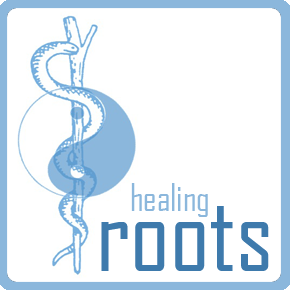 The sister of a woman recently diagnosed with amyotrophic lateral sclerosis (ALS) came to the neurology clinic while I was on rotation there and asked the physician if there was anything else besides riluzole that her sister could use for treatment. Essentially, the doctor responded that there were no other treatments. This sister was inquisitive, though, and pressed further–“I had heard acupuncture might be useful. What do you think?” It couldn’t hurt, the physician replied. She then asked, “Where should we go?”
The sister of a woman recently diagnosed with amyotrophic lateral sclerosis (ALS) came to the neurology clinic while I was on rotation there and asked the physician if there was anything else besides riluzole that her sister could use for treatment. Essentially, the doctor responded that there were no other treatments. This sister was inquisitive, though, and pressed further–“I had heard acupuncture might be useful. What do you think?” It couldn’t hurt, the physician replied. She then asked, “Where should we go?”
Referral to complementary and alternative medicine practitioners can be challenging for physicians on many levels.
First and foremost, there is the issue of safety. “If I refer patients to a homeopath, will my patient be safe?” “Will there be an interaction with their medications?” “Is this ‘alternative’ practitioner a quack?” “How do I trust them?” are all questions that may run through a clinician’s head before making a referral. The validity of these questions should not be underestimated, even by those physicians that have a bent towards complementary and integrative therapies. Primum non nocere.
Next comes the question of efficacy. “Will this treatment work?” “Should I send my patient to someone if the therapy is ‘merely a placebo’?” And closely tied in with efficacy is the issue of cost. Many of these healing practices are expensive, with only minimal insurance coverage, if any. “How will my patient afford this acupuncture treatment?” “Is the benefit of the therapy worth the cost of the treatment?”
While these are all issues that can be discussed at great length, I would like to take a few moments to propose one avenue that is not written about much in the literature: how to select a complementary and integrative medicine practitioner. From my experience organizing an integrative therapy health fair for five years in medical school and conducting some of my own research, I think there are two key components: credentials and visiting practitioners.
Part 1: Credentials
Some interesting research has discussed this very point. Most recently, in a 2011 article in Pediatrics, Gilmour et al. wrote that, at a minimum, CAM practitioners should have: “proof of licensure or membership in a regulated health profession (when applicable); satisfactory completion of required courses, examinations, and continuing education; satisfactory history in relation to disciplinary action and malpractice liability; and, for nonemployees, appropriate malpractice insurance.” On a more detailed level, Dr. David Eisenberg, former director of the Osher Clinical Research Center at Harvard, wrote a landmark article in the Annals of Internal Medicine in 2002 entitled “Credentialing Complementary and Alternative Medicine Providers.” While outlining the legal credentials necessary for acupuncturists, naturopaths, chiropractors, homeopathic physicians and massage therapists, the article suggests more detailed credentials than simply completing an examination for licensure. Eisenberg suggests looking into other aspects of CAM providers’ practices: years of experience, practice demographic, scope of practice, liability insurance, medical record keeping and clinic location/office environment.
While these more objective criteria are necessary, my experience in the realm of complementary and integrative therapies points to a need for greater communication between conventional medical providers and practitioners of non-conventional healing arts. Enter part two.
Part 2: Visiting a Practitioner
Throughout four years of medical school, I have asked many a physician whether or not they communicate with the “alternative” medicine practitioners that their patients see. Maybe two out of the fifty or so doctors I have asked replied in the affirmative. So if physicians aren’t even making a phone call, why am I taking the leap to say they should visit these practitioners? The pluses are many and the minuses are few.
The benefits can stretch from the personal level to the community level. First of all, on a personal level, the conventional medicine physician will get a first-hand experience of what a CAM practitioner’s practice is like: where the clinic is located, what the clinic environment is like, how the provider interacts with his or her patients, what the treatment itself feels like, as well as an overall “sense” or “intuition” about the provider and the particular therapy. In addition, the visiting physician may benefit from some self-care by receiving a treatment for his or her own personal health.
On another level, the benefits of visiting a CAM provider include being able to provide feedback of the experience to their own patients. If the clinic visit went well and the physician recognized there was a therapeutic benefit, he or she will feel more confident about referring patients to that provider and will more clearly be able to explain that particular modality to his or her patients.
Lastly, such a visit would benefit the physician on a community level. By experiencing a clinic, the doctor will begin to realize that there may be other options for future patients or patients of other clinicians. By creating avenues for communication, the physician transforms the work of healing patients from an “us versus them” mentality between conventional and non-conventional medicine into a partnership where all providers seek the best possible care for the patient.
Drawbacks? Time, perhaps. Not really, though. A visit may only take an hour of someone’s time. Is one visit really enough? That depends on what you are seeking. A complete understanding of a 3,000-year-old medical system like Chinese medicine? No, one visit is clearly not enough. But to get a glimpse of a therapy, to open communication with a practitioner, to have an intuition? Yes, these may be achieved.

